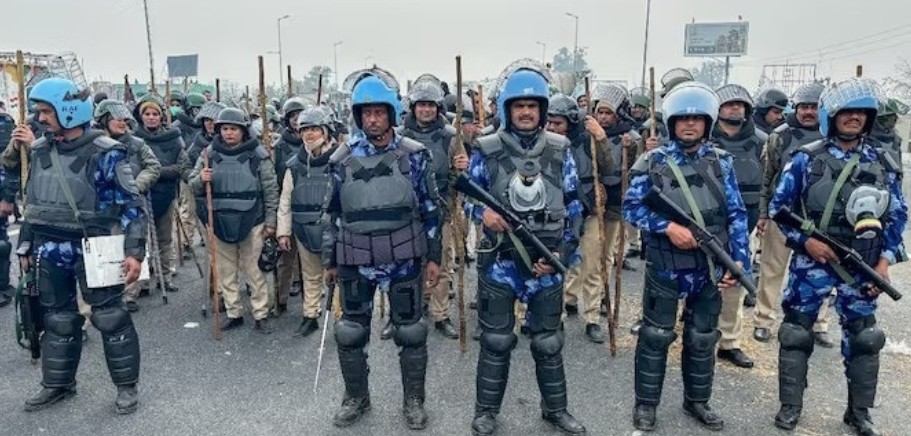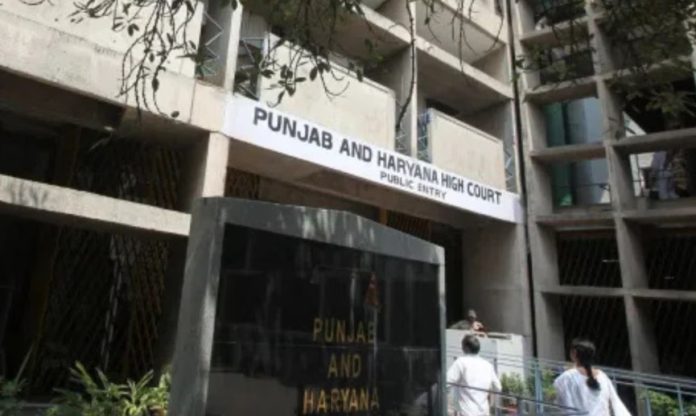In a significant move to address the growing concern of organized criminal activities and threats from gangsters, the Punjab and Haryana High Court has issued a directive to both state governments, urging them to establish a comprehensive Standard Operating Procedure (SOP) to deal effectively with gangster threats. The court’s order is seen as a timely and necessary step in ensuring public safety and restoring the people’s confidence in the rule of law, which has been shaken by increasing instances of gang-related violence and intimidation.
The decision comes in the backdrop of a series of high-profile cases involving gang warfare, targeted killings, and threats to businesspersons, politicians, and law enforcement personnel across Punjab, Haryana, and the Union Territory of Chandigarh. These developments have not only alarmed the public but also placed pressure on the judiciary to step in and demand a structured response from the executive branches of the respective states.
During the hearing of a petition that highlighted the rise in gangster activity in the region and the lack of a clear strategy to address it, the High Court bench, comprising Justice Anupinder Singh Grewal and Justice Sumeet Goel, stressed the need for a coordinated and methodical approach to counter the menace. The bench stated that sporadic arrests and seizures were not enough and emphasized that a preventive framework was urgently needed.
The court’s instructions specifically called on the state home departments to draft and submit a well-defined SOP that would include protocols for intelligence gathering, coordination among law enforcement agencies, risk assessment, and protection measures for individuals under threat. Additionally, the SOP is expected to outline how to handle online threats, the role of special task forces, and the use of technology, including surveillance and digital forensics, to trace and dismantle gangster networks.

One of the primary concerns highlighted in the petition was the increasing use of social media platforms by gangsters to issue threats, claim responsibility for violent acts, and attempt to instill fear among the general public. The court acknowledged the threat posed by this modern-day digital presence of criminals and noted that law enforcement agencies must be equipped with cybercrime units capable of monitoring and countering such activities. The SOP, therefore, must incorporate a strong cyber vigilance component.
In the same vein, the High Court also noted the worrying trend of gangsters operating from within jails. Incarcerated individuals, often high-ranking gang members, have continued to orchestrate criminal acts from behind bars using mobile phones and outside contacts. The court pressed for stringent prison reforms, including signal jamming, increased surveillance, and more secure management of high-risk prisoners.
The High Court further remarked that the gangster problem was not merely a law-and-order issue but one that also threatened the socio-political fabric of society. From influencing local elections to intimidating witnesses and manipulating tender processes, the impact of gangsters has spread beyond the criminal underworld into civil and administrative areas. As such, the court emphasized that combating gangster threats required inter-departmental collaboration, including the police, intelligence units, judiciary, and civil administration.
The court also encouraged both governments to explore collaboration with central agencies such as the National Investigation Agency (NIA) and the Intelligence Bureau (IB), especially in cases where criminal activities transcend state borders. The need for real-time intelligence sharing between states and central law enforcement bodies was also stressed as a core component of the upcoming SOP.
Responding to the High Court’s directions, the representatives of the Punjab and Haryana governments assured the bench that necessary steps would be taken to frame and implement the SOP in the shortest possible time. The counsel for both governments acknowledged the growing threat of gangsterism and reiterated their commitment to eradicating it through strict action and institutional mechanisms.
Sources within the home departments of both states have revealed that high-level meetings have already been held to deliberate on the High Court’s directive. Senior police officers, legal advisors, and cybersecurity experts are reportedly involved in drafting the SOP. Preliminary proposals include the formation of a dedicated anti-gangster cell, deployment of undercover officers for intelligence gathering, and community outreach programs to encourage public cooperation and tip-offs.
Meanwhile, the general public and civil society organizations have welcomed the High Court’s initiative. Many believe that the proactive stance by the judiciary will lead to better coordination and accountability within the police forces, which have often been criticized for delayed responses or inadequate preventive measures in the past. Business communities and political figures, often the targets of gangster threats, have also voiced their appreciation for the move, expressing hope that the new SOP would provide them with a sense of security and reassurance.
Legal experts have termed the directive as an example of judicial activism at its best. They argue that while maintaining law and order is primarily the responsibility of the executive, the judiciary’s role in ensuring fundamental rights — especially the right to life and security — becomes pivotal in scenarios where the state appears to be faltering. By ordering the formulation of a detailed SOP, the High Court has not only acknowledged the seriousness of the issue but has also provided a roadmap for systematic improvement.
It is expected that the court will review the progress made by both governments in the coming weeks. The bench has asked for a status report to be submitted, outlining the structure, contents, and implementation plan of the proposed SOP. The court has also kept the matter pending for further hearing, signaling its intent to monitor the development closely and ensure that the directive does not remain on paper alone.
This intervention by the Punjab and Haryana High Court sets a precedent for other states grappling with similar issues. It brings to the forefront the importance of preemptive action and structured planning in dealing with organized crime. As Punjab and Haryana move forward in drafting the SOP, all eyes will be on how efficiently and swiftly these measures are translated into action on the ground, with the hope that it leads to a lasting impact on the law and order situation in the region.


